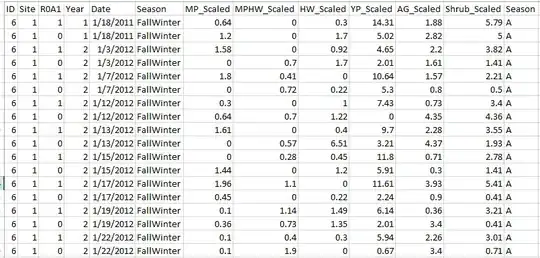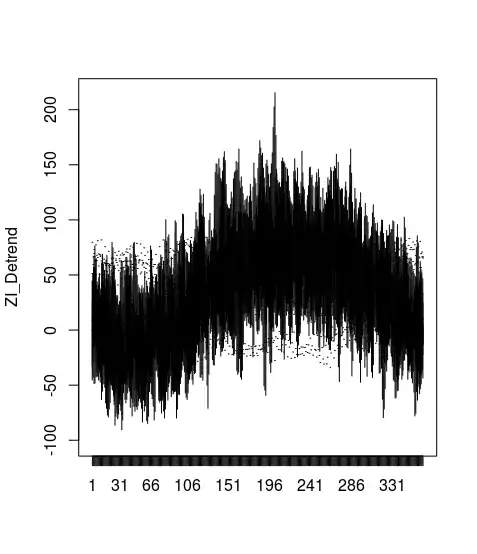I'm following the procedure in this post (Adjusting daily time series data for the seasonal component) on R 3.2.3 (linux).
The de-seasoning process in the above post works fine. But with my data, a weather time series with 32,000+ observations, the same process leaves behind a noticeable seasonal trend, as shown below.
> ZI_Index <- ts(ZI_FINAL$ZI, start = c(1926,1,1), frequency = 365.25)
> ZI_Trends <- stl(ZI_Index, s.window = "periodic")
> plot(ZI_Trends)
> ZI_Detrend <- ZI_Trends$time.series[,"remainder"]
> monthplot(ZI_Detrend)
> ZI_Detrend_Trends <- stl(ZI_Detrend, s.window = "periodic")
> plot(ZI_Detrend_Trends)


